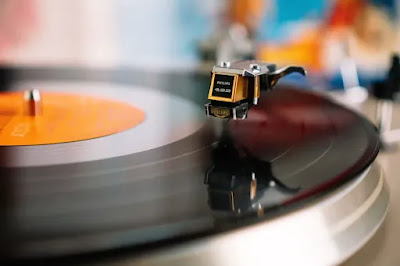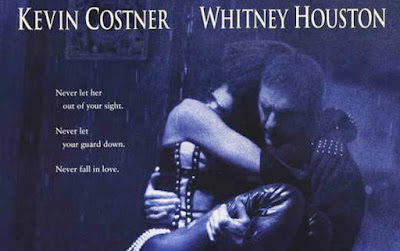I was inspired by a podcast called The 500 hosted by Los Angeles-based comedian Josh Adam Meyers. His goal, and mine, is to explore Rolling Stone Magazine's 2012 edition of The 500 Greatest Albums of All Time.
Album: #256
Album Title: Trans-Europe Express
Artist: Kraftwerk
Genre: Electronic, Synth-Pop, Avant-Garde, Experimental
Recorded: Kling Klang Studios, Dusseldorf, West Germany
Released: March, 1977
My age at release: 11
How familiar was I with it before this week: Not At AllIs it on the 2020 list? Yes, at #238, moving up 18 spots since 2012
Song I am putting on my Spotify Playlist: Europa EndlosPerhaps, you're fortunate to have reached that stage in life where you've become accustomed to purchasing most things when you need them. You may, if you're lucky like I've been, be able to purchase many things simply because you want them. It is a nice, comfortable feeling. However, there is something magical about having to save your money for a much desired purchase -- particularly when you are young.
When I was 15, I landed my first regular job. Sure, I'd had gigs before - delivering newspapers, babysitting and running the snack-bar at high school events. This time it was consistent work -- a job, custodian for10-12 hours a week at the local community centre.
.jpg) |
| Byron Optimist Centre in London, Ontario (recent photo). |
At the time, the minimum wage in Ontario was $3.30/hour. However, my new employer, the City of London, paid the princely sum of $5.82/hr. Not surprisingly, my friends were flabbergasted...and jealous. I was over-the-moon, delighted with my good fortune and, shortly after, set my sights on my first big purchase -- the Technics SL-D4, Direct-Drive, Linear Tracking Turntable.
 |
| Technics Sl-D4 Linear Tracking Turntable. |
The store where I spotted my first big purchase was Great West Audio, located in downtown London. It was (for a Canadian high-school student in the ‘80s) a high-end boutique stereo outlet, carrying products far superior to those found in typical department store catalogues, such as Eaton's, Simpson-Sears or Consumer Distributing. Those options had been fine when I was a kid -- but now I was “grown up and ready for some hi-fidelity.
 |
| The interior of a typical stereo store. |
I put a $40 down-payment on the $270 turntable. It was my first experience with "lay-away purchasing" and it made me feel tremendously mature. I diligently visited Great West Audio by bus every second Saturday, just after payday. If all went well, the turntable would be mine in about 14 weeks.
Needless to say, I got to know the weekend store clerks well and, since I was an active consumer, we would have friendly chats.They were likely only six or seven years older than I, but from my high-school vantage they were among the coolest adults I knew. I was actually a little envious of their career -- dressed in hip, business attire, making "big money", while playing awesome tunes on amazing stereo equipment all day. Plus, it was their job to talk to pretty girls who walked in to look around. (Truth be told, the male:female ratio was about 9:1, and that included girlfriends dragged inside by their high-school beaus).
Each time I dutifully deposited an installment, I wandered around the store to ogle dream purchases -- amplifiers, receivers, cassette decks and, of course, speakers. I had my eye on a pair of Mission 707 which were displayed prominently in "The Speaker Lounge" -- a sound-proofed studio at the back of the store.
 |
| Mission 707 Speakers - similar to the pair I would eventually purchase. |
"Want to hear something cool through them, Marc?", the twenty-something sales clerk asked one Saturday afternoon.
"Sure", I responded, anticipating him to produce something familiar from the world of ‘70s rock--hopefully, something rich and complex, like Pink Floyd.
"Have you heard the latest from Kraftwerk?" he asked, producing a predominantly yellow album. He removed the record and handed me the jacket.
I shook my head plaintively: "No".
"They are German, electronic, incredible through those speakers you like". Salesmanship guile. He cued up the record and cranked up a nearby amplifier while motioning me to a nearby chair -- ostensibly situated for quality audio reception. For the next 5- 10 minutes, I sat in comfort, reading over the album jacket and experiencing Kraftwerk for the first time. |
| Computer World album cover by Kraftwerk (1981) |
Kraftwerk, (Power Station in German) is an avant-garde, experimental, electronic band, formed in Dusseldorf in 1970. Initially, they were part of West Germany's "krautrock" scene -- a catch-all term for a broad genre of experimental rock sounds, including "kosmische" (cosmic) music which contained hypnotic rhythms, improvisations and the earliest use of synthesizers. The emergent style was a reaction to the cliches of Schlager Music, the conventional German pop music of the time, full of formulaic themes of love and homeland. It was simple, happy-go-lucky and sickly sentimental "Volksmusic" (folk music).
 |
| Heinz Georg Kramm - "Heino" - a well-known Schlager Music singer |
During their classic period (1974-1986), Kraftwerk comprised founding members Florian Schneider and Ralf Hütter, as well as Wolfgang Flür and Karl Bartos. Since the quartet’s inception 50 years ago there have been 21 members. .jpg) |
| Kraftwerk performing in Zürich, 1978 |
The members played a variety of conventional musical instruments (guitar, violin, saxophone, drums) plus their electronic gadgetry. Today, it is easy to purchase an inexpensive synthesizer, I have a $300 electronic piano that can replicate dozens of instruments. However, in the 1970s, these ingenious musicians were literally purchasing motherboards, wires, processors and small memory chips that are primitive by today's standards. The components were wired together with a variety of interfaces and, through trial and error, synthetic music never heard before was created.
.jpg) |
| Kraftwerk members behind an early synthesizer creation. |
Schneider died in April, 2020, after a brief battle with cancer at the age of 73. Hütter continues to perform with three new members, two of whom have been with the band since the late 90s. In October, 2021, the group were finally inducted into the Rock and Roll Hall of Fame, a recognition long overdue. The group primarily influenced many genres of modern music, including synth-pop, hip-hop, and post-punk, as well as the techno, house, ambient and club music that dominated the dance scene in the 90s. They have also been cited as a seminal influence by dozens of modern artists, including many with records on The 500 list and other more current album lists -- Depeche Mode, The Cure, Radiohead, LCD Soundsystem and Daft Punk. Kraftwerk were the bedrock for the success of Hip Hop. Darryl McDaniels of Run DMC (#242 on The 500) told the English trade magazine New Musical Express in December, 2020, that:
“Kraftwerk were a foundation of hip-hop not just because of their music, but they built their own machines and computers. They were doing the same thing as young boys and girls in the Bronx were doing at the beginning of hip-hop."
German experimental electronica and New York City hip-hop seemss an odd connection, but McDaniels' thesis holds water. Young, hip-hop pioneers, including Grandmaster Flash, would salvage amplifiers, turntables, wires, tubes and a plethora of other parts from behind electronics and stereo stores to assemble the earliest equipment used to DJ. Additionally, Hip-hop artist Africa Bambaataa (born Lance Taylor) released his genre defining electro-beat album Planet Rock in 1986, containing samples from Trans-Europe Express. When I left Great West Audio that hot Saturday afternoon, in the summer of 1982. I sincerely considered buying a Kraftwerk record to add to my collection -- something I could eventually play on my Technics SL-D4, Direct-Drive, Linear Tracking Turntable through my Mission 707 speakers. The science fiction movie Tron had recently been released and Kraftwerk reminded me of the soundtrack. I thought perhaps I should try to get ahead of this new sound that seemed to be the future of music. Little did I know it was already old enough to be influencing the contemporary music I was hearing. I didn't, but I did invest in other artists who were similarly experimental, including Jean Michelle Jarre, Nash the Slash, FM, Wendy Carlos, Gary Numan and Duran Duran. For this blog, I took a deep dive into Kraftwerk, listening to Trans-Europe Express and many of the other offerings from their catalogue. Beyond a rich appreciation for their groundbreaking creativity, I really like the music and it will get many more plays.
What was the first big purchase you saved up for?When did you first hear Kraftwerk? |
The only picture I have of my eventual set-up - Mission 707
speakers & linear tracking turntable in 1992 |

















.jpg)


.jpg)






.jpg)







.jpg)
.jpg)












